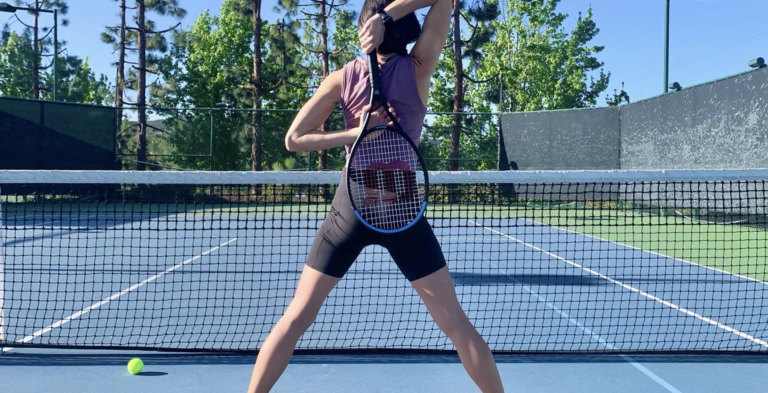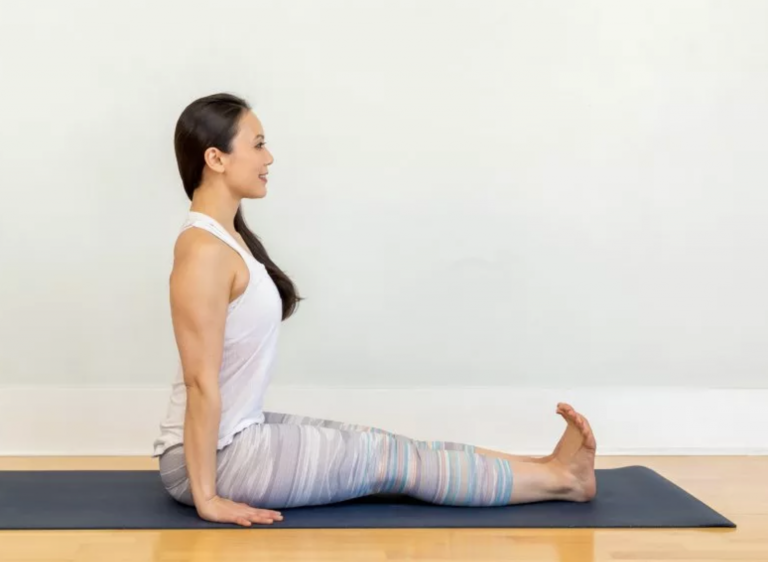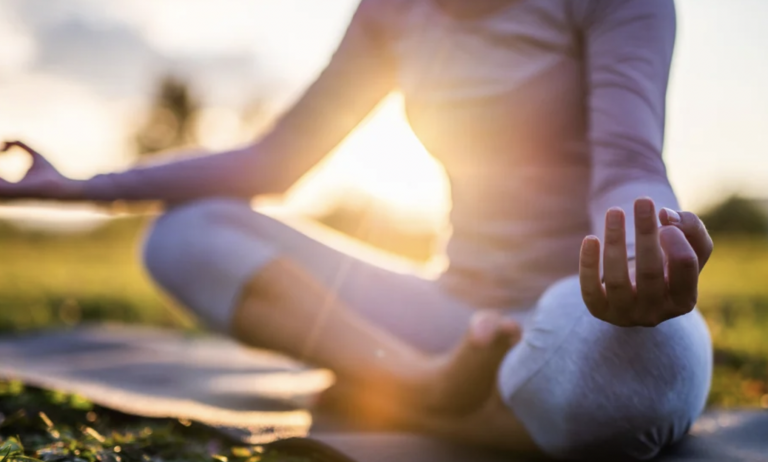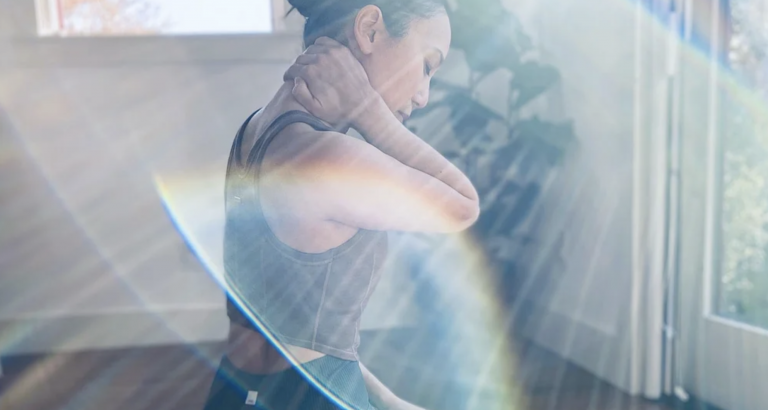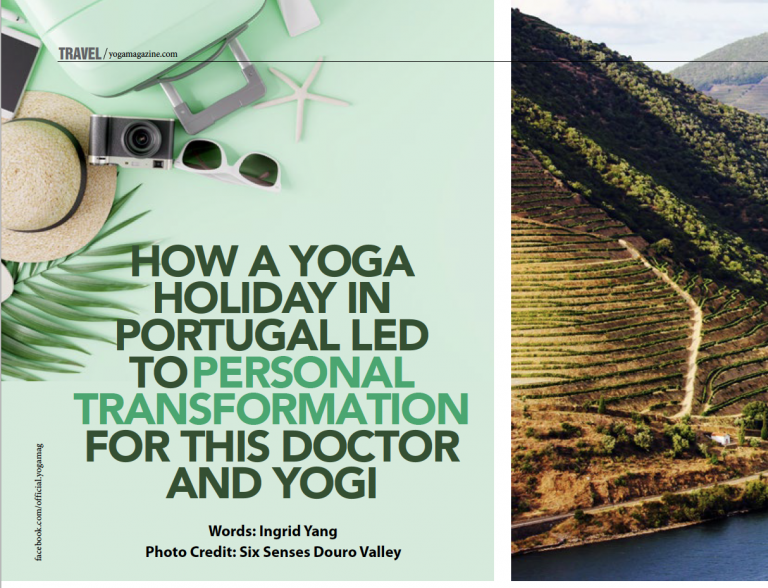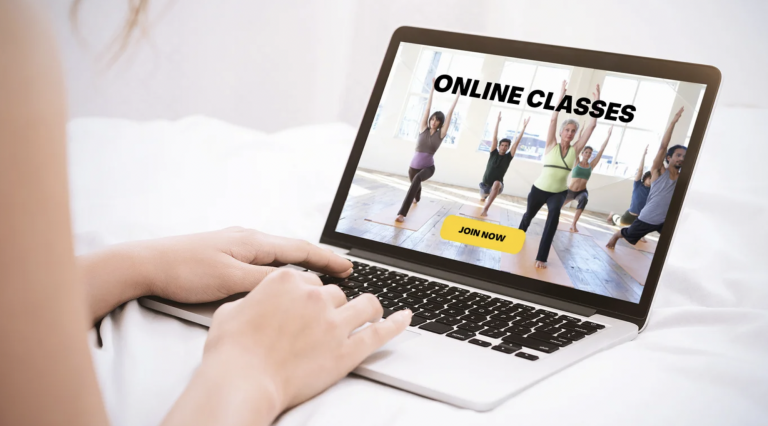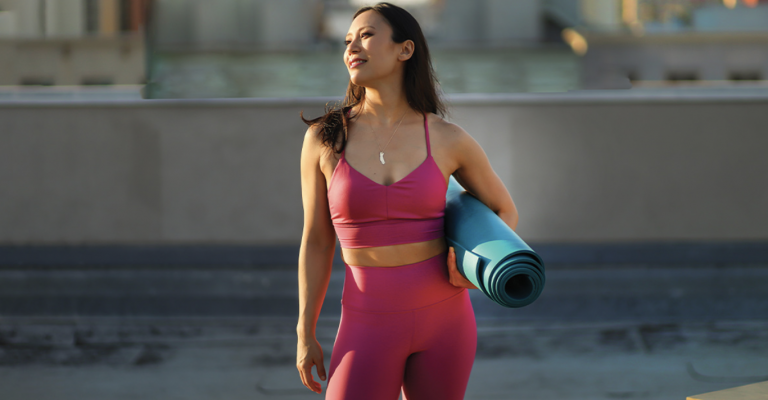The original article was posted on YogaJournal. See the article here.
With the arrival of spring and warmer weather, tennis fans are ready to hit the courts. During a recent trip to the Maldives, I took up tennis again after a 20-year hiatus and noticed sore muscles that I forgot existed! So, per usual, I turned to yoga to ease my aching muscles and to connect with my breath while playing this cardiovascularly intensive sport.
When designing a yoga program for a specific activity, whether tennis, cycling, or skiing, it’s helpful to begin with a review of the muscles we use while engaging in the sport. In this case, it is no over-exaggeration to say that tennis requires the use of all of our muscle groups. While it may appear that the upper body muscles are the primary movers in tennis, the lower body and core play an integral role as well. To understand how this dynamic works, we’ll have to visit our dear friend (or in my case, frenemy), physics.
Tennis is the transfer of energy
Effectively hitting a tennis ball requires the coordinated activation of a kinetic chain of motion. The kinetic chain refers to the linkage of multiple segments of the body, which allows for the transfer of forces, resulting in moving the tennis ball. When striking the ball, your core must engage as the feet push against the tennis court to propel your body forward, stabilizing the trunk and maintaining your center of gravity. The power then moves into your chest, back, and arms. In this elegant sequence of energy transfer, the power is conveyed from the legs and core into your arm and racket, then to the ball. So the racquet is simply the messenger transferring this power from your core to the ball.
This yoga sequence works to transfer vitality back to your muscles after a hard workout on the tennis court, and return the energy (virya) back into the ground.
8 yoga poses for tennis players
Prasarita Padahastasana (Reverse Hand-to-Foot Pose)
Why this yoga pose works for tennis players: This variation of Padahastasana focuses on stretching your inner wrists and forearms, not the backs of your legs. In practicing this pose with the hands reversed—meaning your palms are on the ground, facing your body—the stretch is focused on your wrist flexors, which are integral in gripping the tennis racket. This stretch can also help to prevent muscular imbalance in the forearms, which will protect your wrist extensors, decreasing your risk for tennis elbow.
How to: From standing, fold forward over your legs. Bend your knees deeply so you can place your hands on the floor. Rotate your forearms so your fingers point toward your feet with your palms on the ground. Root the heels of your hands into the earth and feel a stretch in the inner forearms. Optionally, step on the back of your hands/fingers to intensify the stretch as shown in the photo. Hold for 3–5 breaths.
Adho Mukha Svanasana (Downward-Facing Dog Pose)
Why this yoga pose works for tennis players: This pose stretches the posterior legs, especially the calf muscles, which provide the power to push off from the court as you move toward the ball. It also stretches and lengthens your back muscles, which often become tight from quick bursts of running.
How to: From Prasaraita Padahastasana, step off your feet, turn your hands around so your fingers face forward. Step back and lift your hips into an inverted V-shape with your body. Straighten your elbows and drop your chest back toward your shins. Bend your knees slightly to take any strain off the backs of your knees. Pedal through your feet. This will enhance the stretch in the calf muscle opposite of the bent knee. Hold for 5–10 breaths.
Virabhadrasana I variation (Warrior I with chest stretch variation)
Why this yoga pose works for tennis players: Chest and hip stretching are particularly important in tennis because your body sits in flexion as you wait for the ball to zoom across the net at you; your knees and hips bend, and shoulders hunch forward over your racket. This tension often tightens your chest muscles, which may increase your risk for shoulder injury. This Warrior I variation stretches the hip flexors in your back leg and your chest all at once.
How to: From Down Dog, step your right foot forward, bending the front knee to 90 degrees. Rotate your left foot slightly so that your outer heel is grounded. Raise your torso, and instead of extending your arms to the sky, interlace your fingers behind the back of your head and open your elbows wide. Allow your hands to create a hammock to hold the weight of your skull. Feel the fronts of your shoulders and chest open, and shine your heart to the sky. Take 5 deep breaths, stretching your intercostal (rib) muscles while maintaining your Warrior I legs. Transition to the other side through Down Dog and hold for another 5 breaths.
Gomukhasana variation (Cow-Face arms in wide-legged stance)
Why this yoga pose works for tennis players: Shoulder stretches are helpful in tennis because they soothe the arm and upper back muscles, which are used every time you swing the tennis racquet. These stretches can also maintain your shoulder’s ability to internally rotate, preventing shoulder impingement injuries that can arise from the repetitive arm motions tennis requires.
How to: From your Warrior I variation, release your hands onto your hips and turn your body and feet toward the long edge of the mat. Keep your legs in a wide stance for a strong base of support, and reach your right hand to the sky and left hand down alongside the hip facing forward. Bend both elbows, reaching the right hand down and left hand up, trying to connect the fingers. If you are unable to touch the hands together, use your tennis racket (or a towel) to create an extension of the hands to find the shoulder stretch. Hold for 5 breaths and switch sides.
Bonus: You can also fold forward and relax your torso between your legs to add an additional stretch to the back of your legs.
Anjaneyasana variation (Crescent Lunge variation with quad stretch)
Why this yoga pose works for tennis players: The quadriceps extend the knee, which is important for running powerfully in tennis. However, tight quadriceps can create muscular imbalances and leave the hamstrings vulnerable to injury, which is common in tennis. Quadriceps flexibility can help prevent knee pain, and reduce risk of knee and hamstrings injuries.
How to: Make your way into Down Dog, and then step your right foot between your hands, as you lower your left knee to the mat. (Double up your mat or tuck a blanket under your knee to pad your knee cap). Stack your hands on your right knee to lift your torso upright. Keep your right hand on your front leg for balance and bend your left knee to actively bring your foot toward your buttocks. Catch hold of your left ankle with your left hand. If there is strain to grasp your ankle, wrap a strap (or a towel) around your left foot and gently pull it toward your buttocks with your left hand to find the stretch. Hold here for 3–5 breaths and switch sides, transitioning through Down Dog.
Supta Eka Pada Rajakapotasana variation (Supine Pigeon)
Why this yoga pose works for tennis players: Your lower body function is contingent on the foundation of the hips. Your hips support the spine, keep your body upright, and provide a base of support for your torso. When it comes to athletic challenges on the court, the hips are one of the most important parts of your body. Maintaining hip flexibility with stretching is an important way to sustain your tennis game long-term. This pose stretches the muscles in the outer hips which decreases tension/strain in the joints of the legs and lower back.
How to: Lower your knees from Down Dog and roll onto your back. Bend your knees and place your feet flat on the ground, hip-width apart. Bring your right knee into your chest, and externally rotate your hip joint so your right ankle rests above your left knee. Lift your left foot off the ground and draw both legs into your chest, interlacing your fingers behind your left thigh or shin. Relax your lower back on the ground (don’t let it lift off the mat), and optionally press your right knee away with your right hand to intensify the stretch. Hold for 5 breaths and switch sides.
Supine Twist
Why this yoga pose works for tennis players: Tennis requires a great deal of strength-based twisting in your torso. These movements can create tension throughout the torso, shoulders, and neck, and thus cause tightness in your postural back muscles. Twisting in an off-loaded position (without downward force on the spinal column) can help to release tension and relax these hard-working back muscles.
How to: Lying on your back with your knees bent and feet flat on the mat, extend your arms out to the side in a T-shape. Cross your right knee over your left and walk your buttocks to the right a few inches so your spine remains in alignment during your twist. Roll your knees towards the left and turn your head to the right. Relax here for 5–10 breaths and then switch sides for another 5–10 breaths.
Upper back mobilizer with a ball
Why this works for tennis players: Tennis or no tennis, this is an awesome recovery technique for anyone (especially with all the shoulder and neck strain we have due to sitting in front of computers and devices). And good news! If you play tennis, you’ll have a tennis ball handy. This self-massage technique is a great way to work knots out of your shoulders and neck, and is oh-so-satisfying.
How to: With a tennis ball in one hand, lie on your back or stand with your back against a wall. Position the ball above your shoulder blade, close to your neck. Move your body side-to-side, up-and-down to access your upper trapezius muscles. After a few roll-overs, let the ball rest there for a little while, taking some slow breaths, until you feel your muscles soften. You are in control regarding how deep you want the ball to unlock your muscles and can adjust by how much body weight you put on the ball. It’s best to be gentle as you start out.
One final recommendation
Tennis is a cardiovascularly demanding sport that requires a great deal of mental focus, so be sure to include some pranayama and meditation in your practice. In addition to improving your focus, pranayama can help improve lung capacity and strengthen your diaphragm. So, don’t skip out on doing some deep breathing and meditation to help your tennis game.

